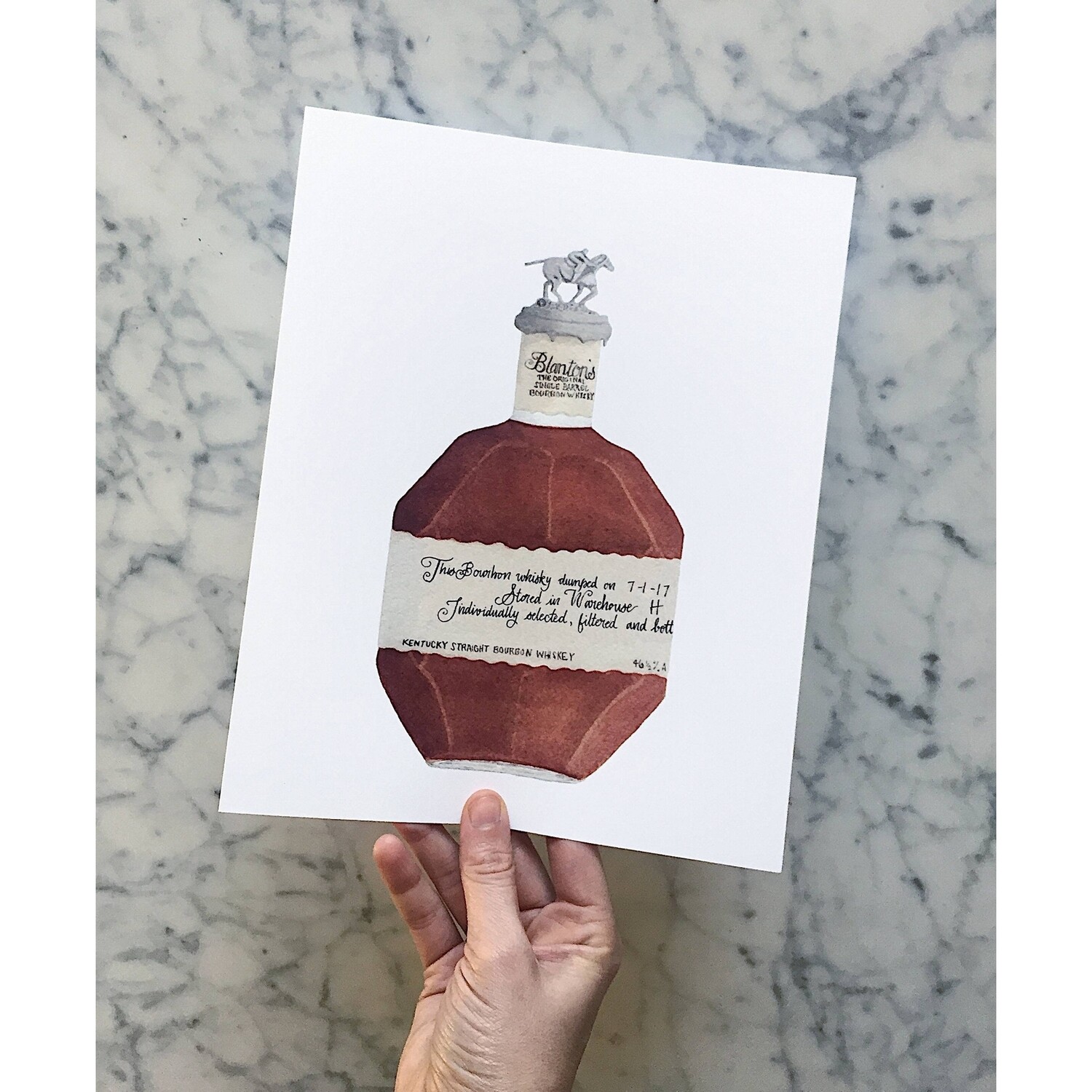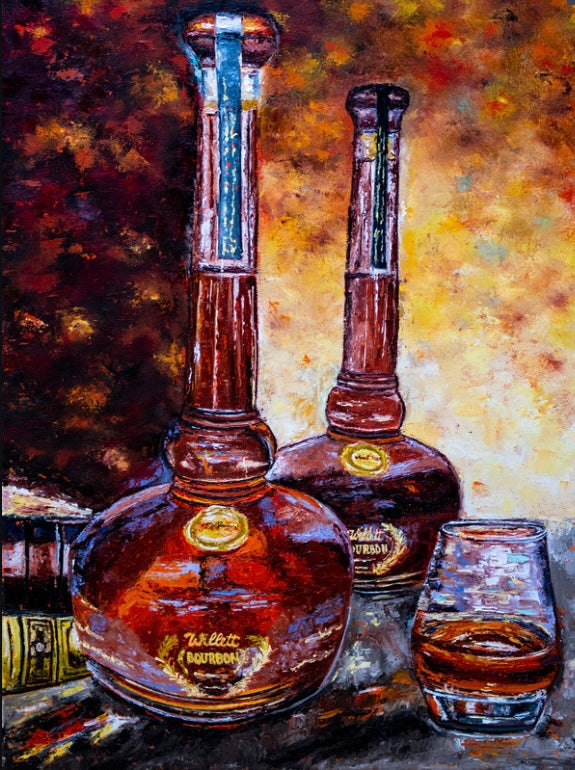Whiskey Art as a Statement: Exactly How It Improves Home Decoration
Whiskey Art as a Statement: Exactly How It Improves Home Decoration
Blog Article
The Value of Whiskey Art in Celebrating Heritage and Workmanship in the Beverage Sector
The intricate partnership in between scotch art and the celebration of heritage and craftsmanship within the beverage sector can not be overstated. Through thoughtfully created containers and labels, scotch brand names envelop their historical origins and the artisanal skills that define their production approaches.
The Historical Roots of Whiskey
At the heart of bourbon's attraction lies an abundant tapestry of historical roots that map back to old people. The beginnings of scotch can be linked to the purification practices of the Sumerians and Babylonians around 2000 BCE, where very early forms of fermented grain beverages began to emerge. However, it remained in the Middle Ages that the art of purification developed considerably, especially in Ireland and Scotland, leading to the development of scotch as we understand it today.
The term "bourbon" itself originates from the Gaelic word "uisce beatha," suggesting "water of life." This expression highlights the social value of whiskey in Celtic societies, where it was usually related to rituals, parties, and common bonding. By the 15th century, purification became an identified craft within reclusive communities, paving the way for the facility of legal distilleries.
As trade paths increased, bourbon's popularity expanded, transcending regional limits and catching the passion of connoisseurs worldwide. Bourbon Art. This historic journey reflects not just the craftsmanship behind scotch production but also its integral duty in social and social contexts, noting it as a considerable drink throughout background
Artistic Expression in Branding
Scotch branding stands as an engaging crossway of creativity and commerce, where visual identification plays an essential role in shaping customer assumption. The aesthetic appeals of scotch tags, packaging, and marketing materials reflect not just the brand's story however additionally its core values and heritage. Through artistic expression, distilleries convey a narrative that reverberates with consumers, evoking emotions and sparking connections.
Using color, typography, and images in branding serves to separate items in a saturated market. As an example, traditional motifs may stimulate a sense of credibility and craftsmanship, while contemporary styles can symbolize advancement and forward-thinking. This critical artistic instructions enhances brand name recognition and loyalty, permitting consumers to create a personal connection with the whiskey they select.
Moreover, creative expression in branding often acts as a party of regional heritage. Distilleries regularly integrate local symbols or historic references into their layouts, producing a local color that welcomes consumers to take part in a wider cultural experience. Inevitably, the creativity behind scotch branding not just enhances visual charm however also improves the general story of the brand name, cultivating a much deeper admiration for the craftsmanship and heritage embedded in each bottle.
Craftsmanship in Container Style
The artistry obvious in scotch branding extends beyond aesthetic identification to include the workmanship associated with bottle design. Each container functions as a vessel not just for the spirit within, yet additionally for the tale it informs about its origin, high quality, and custom. The design process needs careful focus to information, as elements such as form, closure, and product contribute dramatically to the total understanding of the bourbon.
Craftsmanship in bottle style includes picking high-grade glass that can boost the bourbon's shade and clearness, while likewise offering a tactile experience for the customer. The silhouette of the bottle must be both check out here practical and cosmetically enticing, typically reflecting the heritage of the brand name. Numerous distilleries choose special forms or printed logo designs that evoke a feeling of authenticity and history.
Furthermore, the tag design and typography play a vital function in interacting the brand name's narrative. Limited Edition. A well-crafted container not only astounds the customer's eye but likewise enhances the brand's commitment to high quality and tradition. By doing this, the craftsmanship of container style becomes a vital facet of the whiskey experience, merging creativity with an extensive respect for heritage
Social Relevance of Scotch Art
Celebrating tradition and workmanship, the social importance of bourbon art goes beyond mere visual appeals, linking with the social and historical stories of the regions from which it originates. Each bottle functions as a canvas, illustrating the unique stories, folklore, and practices that have important site shaped local whiskey-making practices. The intricate designs typically reflect the heritage of the distillers, including icons and concepts that reverberate with the society and worths of their areas.

In enhancement, bourbon art plays a vital duty in communal events and events, serving as a tangible web link between individuals and their shared experiences. By appreciating the artistry in whiskey product packaging, customers cultivate a deeper understanding and regard for the craft, inevitably enhancing their pleasure of the beverage itself.
Modern Trends in Whiskey Discussion
In the last few years, the discussion of bourbon has progressed to mirror modern tastes and patterns while still honoring typical workmanship - Bourbon Art. Distilleries are progressively focusing on aesthetic aspects that improve the general alcohol consumption experience, linking the gap between heritage and modernity
Cutting-edge bottle designs have arised, typically including sustainable products and imaginative labels that inform engaging tales. Lots of brand names currently work together with neighborhood musicians, instilling their products with distinct aesthetic expressions that resonate with consumers. Furthermore, limited-edition launches are often packaged in collectible containers, adding worth and allure for connoisseurs.

Verdict
In final thought, whiskey art functions as an essential channel for revealing the heritage and craftsmanship fundamental in the beverage market. Through elaborate branding, innovative bottle layouts, and culturally significant artistic aspects, bourbon brand names effectively recognize their traditions and link with consumers. This artistic narrative not only boosts the recognition of scotch however likewise strengthens neighborhood identity and satisfaction amongst producers. Eventually, scotch art plays a crucial duty in preserving and celebrating the rich cultural tapestry of whiskey-making.


Craftsmanship in container design involves picking premium glass that can improve the scotch's shade and clarity, while additionally supplying a tactile experience for the customer. In this way, the workmanship of container design becomes a crucial aspect of the whiskey experience, combining artistry with a profound regard for heritage.
In final thought, scotch art serves as a crucial conduit for revealing the heritage and craftsmanship intrinsic in the drink market.
Report this page